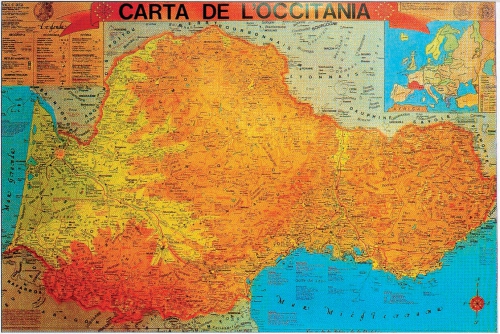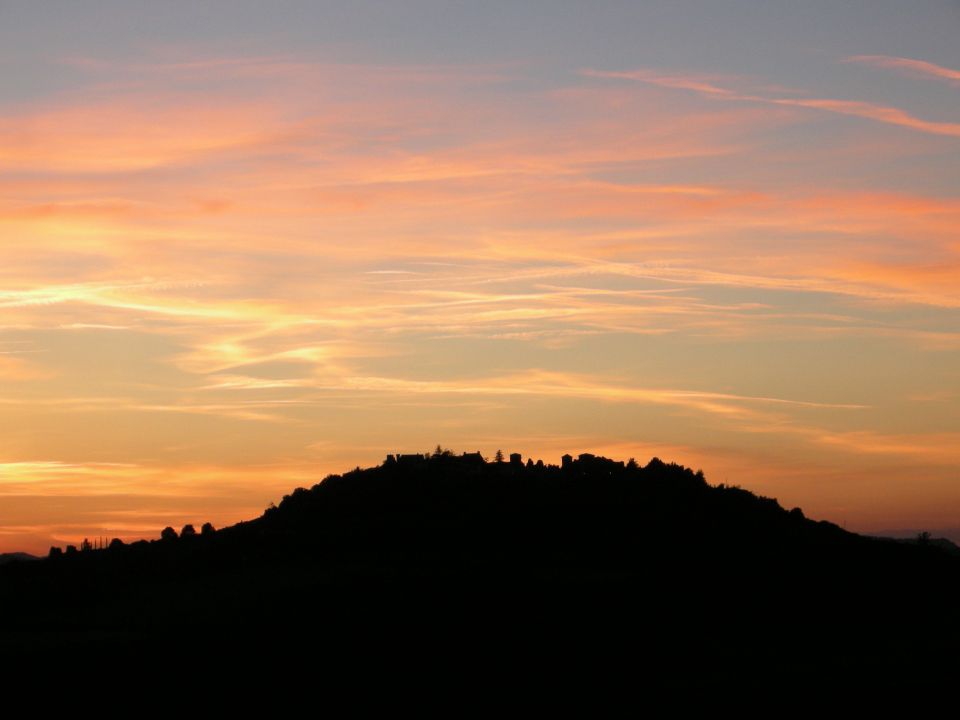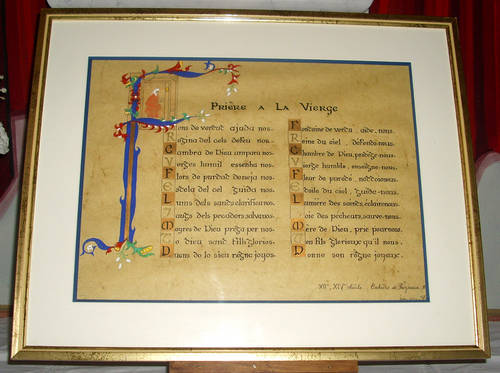OCCITANIA
What do you know about the Occitan Culture?
A brief guide for reference

In my book, "The Mayor that was Me" I describe the life of my previous life, who was an Occitan poet. What does it mean to be Occitan?
For a long time France was divided into northern France, where the word for "yes" was oui, and southern France, where the word for "yes" was oc. The south became known as Occitania. The people there spoke Occitan and not French. Occitania stretched from Bordeaux to the Italian border, from Narbonne to Clermont-Ferrand.
Until the wars with the Cathar Lords were resolved in 1272, all of the south of France spoke a Latin-based language; there were however many different dialects, Provençal in Provence, Occitan in today’s Languedoc and the department of Ariège, and Catalan in the department of Pyrenees-Oriental and northern Spain. All these languages are now being revived as are others, for example, the Breton tongue in Brittany and the Basque tongue of the Western Pyrenees.
I asked my friend Luigi Oliviero to explain further. (For more about Luigi, click here.)
For a long period there was a great difference between written language (Latin) and spoken one. A Council of Tours in 813 decided that priests should preach sermons in the "rusticam romanam linguam aut teutiscam" (romance language or german) understood by the people, instead of the classical Latin as the common people could no longer understand the latter. It is commonly considered as the death of Latin as a live language and the birth of Vulgar languages. We have a very important document showing this dated A.D.842: the oaths of Strasbourg (see http://en.wikipedia.org/wiki/Oaths_of_Strasbourg ) where, just in the beginning we have for the French "Pro Deo amur et pro christian poblo et nostro commun saluament..." and for the Germans "In godes minna ind in thes christiānes folches ind unsēr bēdhero gehaltnissī" (For the love of God and for Christendom and our common salvation). The first literary text in romance ( the language derived from latin) is the "Séquence de sainte Eulalie" (Buona pulcella fut Eulalia, Bel auret corps bellezour anima; good girl was Eulalia, she had a beautiful body and a beautiful soul) manuscript 150 of the town library in Valenciennes. It was written in langue d’Oïl. The Great Italian poet Dante Alighieri, in “De Vulgari Eloquentia” (the vulgar languages) divided the romance languages on the basis of the way each language says the simple word “Yes”. So we have the “Langue d’Oïl” (French), the “Langue d’Oc” (Provencal) and the “Lingua del Sì” (Italian). Starting from the XI century vulgar (that is, for the people) literature flourished in France with Chansons de Geste in the north (Langue d’Oïl) and the Troubadours (Langue d’Oc) in the South. In Italy, the vulgar literature started much later with the “Canticus or Laudes Creaturarum” (circa 1226) by S. Francis from Assisi whose mother was, not surprisingly, Occitan.
But Occitan is more than just a revival of the language. It is also an interest in the old Occitania with its culture of the troubadours and the Cathars. The region is still thought of as a separate country and government from Paris is often despised. There is a great north-south divide in France and great patriotism among Occitan people.
The Occitan people are artistic, literary and musical. Their illuminated manuscripts are breath-takingly beautiful. Their music, with its unique minor chords and tonalities, came from India through Spain and was developed by the troubadours of Carcassonne.
The Occitan culture is heavily linked to the history of the Cathars, symbolised by the fortress of Montségur.
Here are three links to look at. The first is a film with English sub-titles. http://vimeo.com/67129799 25 minutes
The second is French, but with the beautiful illustrations you will follow the story and understand the music. In just ten minutes it will give you a moving insight into how Occitan people feel about their history.
http://www.youtube.com/watch?v=JyLr4yNReEs
The third is a 3-minute clip of the Occitan symphony with beautiful images. Click here.
A 12th century prayer in Occitan and in French, discovered at Duilhac in the Corbières.
Inscrivez-vous au blog
Soyez prévenu par email des prochaines mises à jour
Rejoignez les 28 autres membres



